How to clean plant leaves - according to gardening experts
Just like everything else in your home, plant leaves can accumulate dust, dirt and grime. Find out how to clean them effectively with our easy guide...
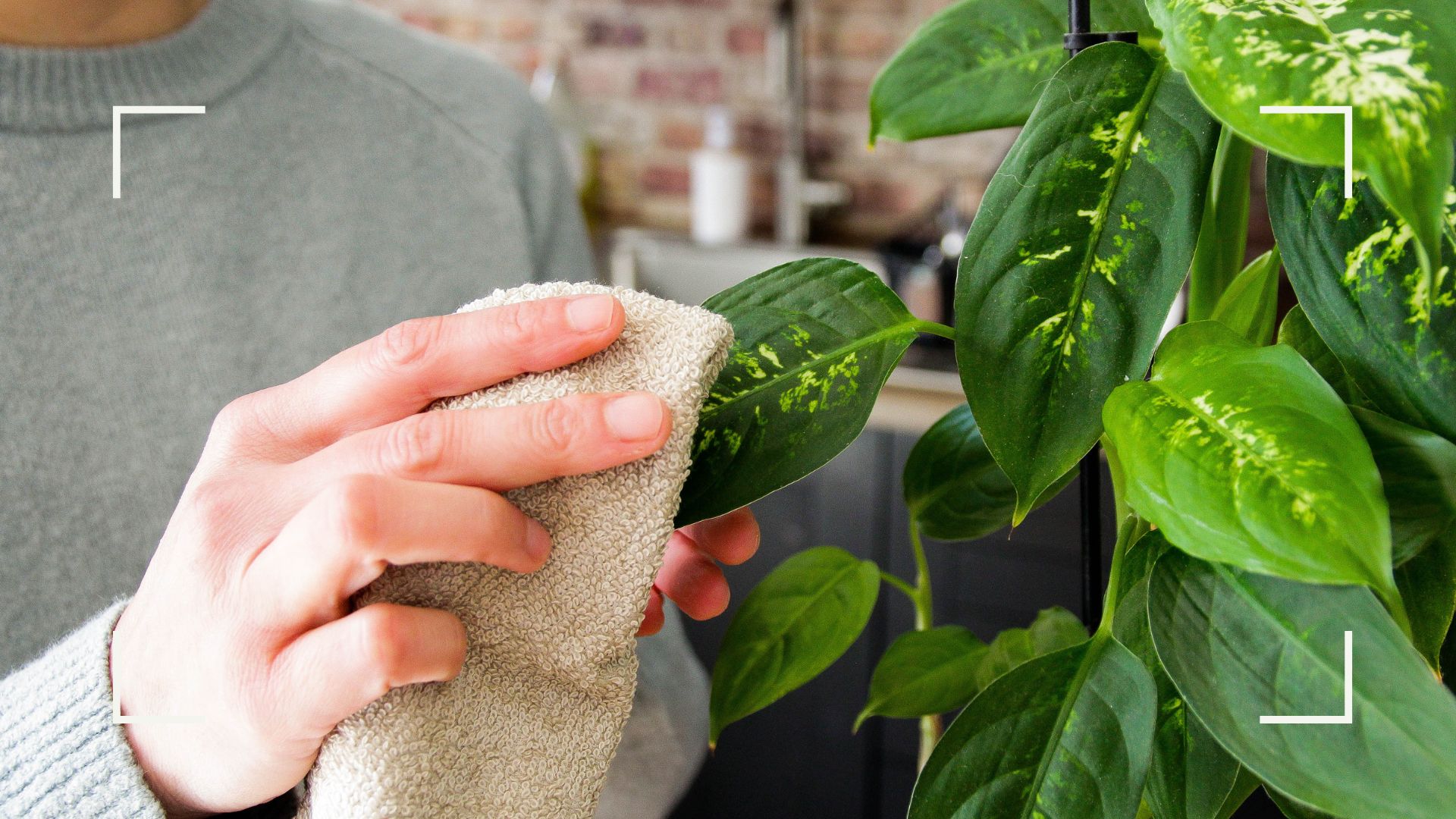

It might not occur to you to include your plants in your regular cleaning routine, but knowing how to clean plant leaves is important if you want to keep your indoor shrubs in tip-top health.
It's no secret that houseplants have a special place in many of our hearts, they not only provide us with clean air but are also proven mood boosters. However, taking care of plants can be more challenging than we realize. We often struggle with questions such as how frequently to water them or how to properly clean their leaves. Luckily, once you know how, it's easy to incorporate into your regular cleaning routine.
There are various benefits to keeping your plants dust and dirt-free. Mark McCance, founder of plant lifestyle brand Hortology says, "A plant's leaves are a power station. They are where the energy needed to live and thrive is produced. Without clean leaves, they simply cannot survive optimally."
Although it won't kill your plants immediately, over time a build-up of dust can block their pores and hinder photosynthesis, leading to a detrimental effect on their growth and overall health. It could also be a reason why your peace lily tips are turning brown more often.
With this in mind, we asked the experts for their recommended cleaning method to ensure your plant is thriving, and dust-free.
How to clean your plant leaves in four simple steps
Now we know how important it is to keep our plants clean, the next step is learning how best to achieve that. After speaking to a number of plant and gardening experts, all advice led to one simple yet effective method.
Warm water and a trusty microfiber cloth are the safest and most effective cleaning techniques. Of course, it's not quite as straightforward as it sounds. The experts warned of a number of precautions that need to be taken when using this method. But with a few steps and some everyday household tools, you can have your plants happy and healthy in no time.
Sign up for the woman&home newsletter
Sign up to our free daily email for the latest royal and entertainment news, interesting opinion, expert advice on styling and beauty trends, and no-nonsense guides to the health and wellness questions you want answered.
Here are the tools you need to clean your plant leaves
- Large bowl
- Warm water
- Microfibre cloth
- Lightweight duster
- Rubber gloves (Optional)
Step 1: Inspect the plant
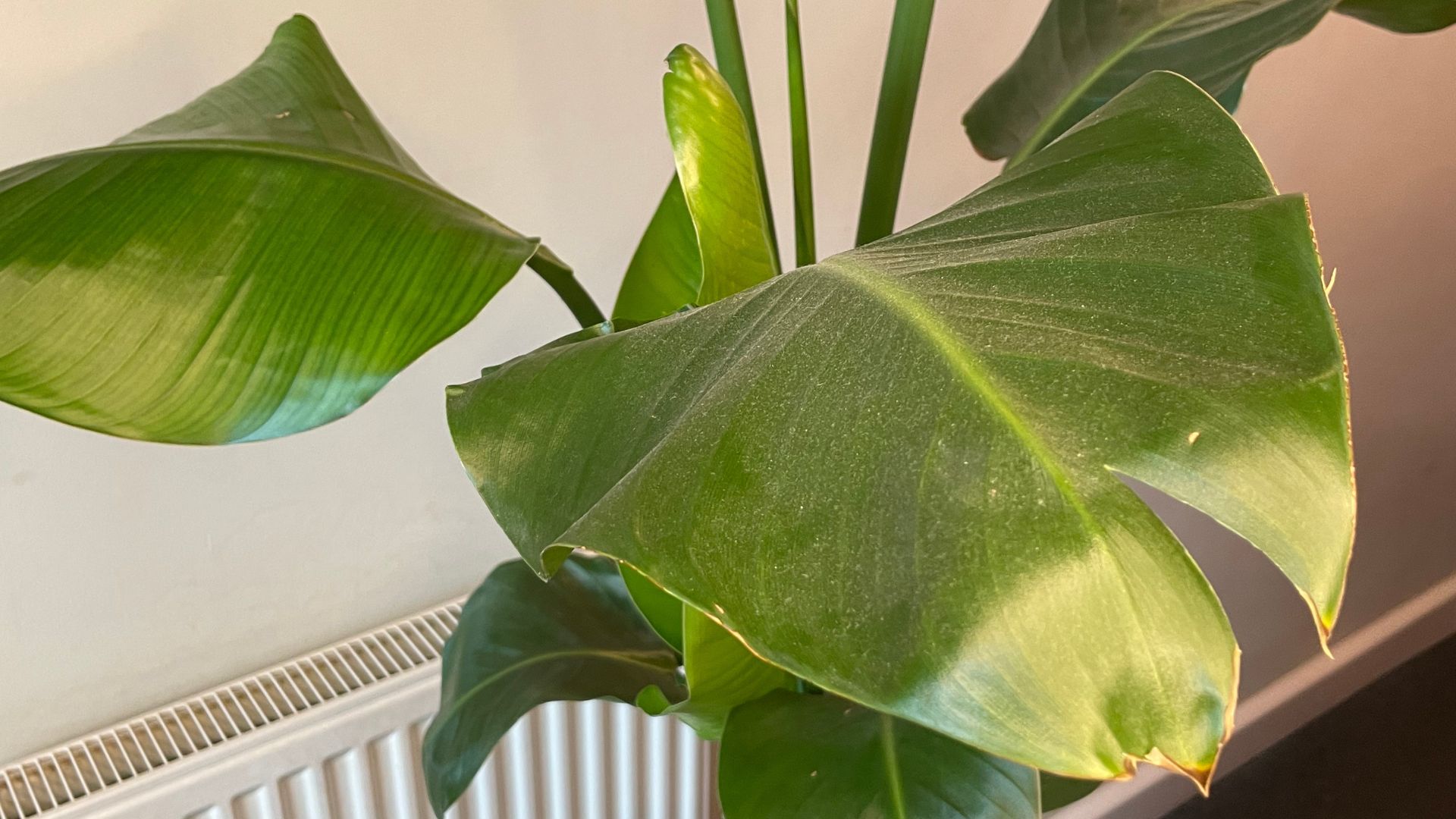
Before you can start cleaning, give your plant a good check-over. Keep an eye out for any signs of pests, brown spots, or signs of distress that could be a warning of a potentially bigger problem.
Mark also suggests removing any dead or yellowing leaves at this stage too. He says, "There's no point cleaning what's already dead. Use sharp, sterile scissors to snip off any problematic areas."
Once you've inspected your plant and are satisfied all is well, it's time to tackle the dust.
Step 2: Lightly dust off any loose dirt
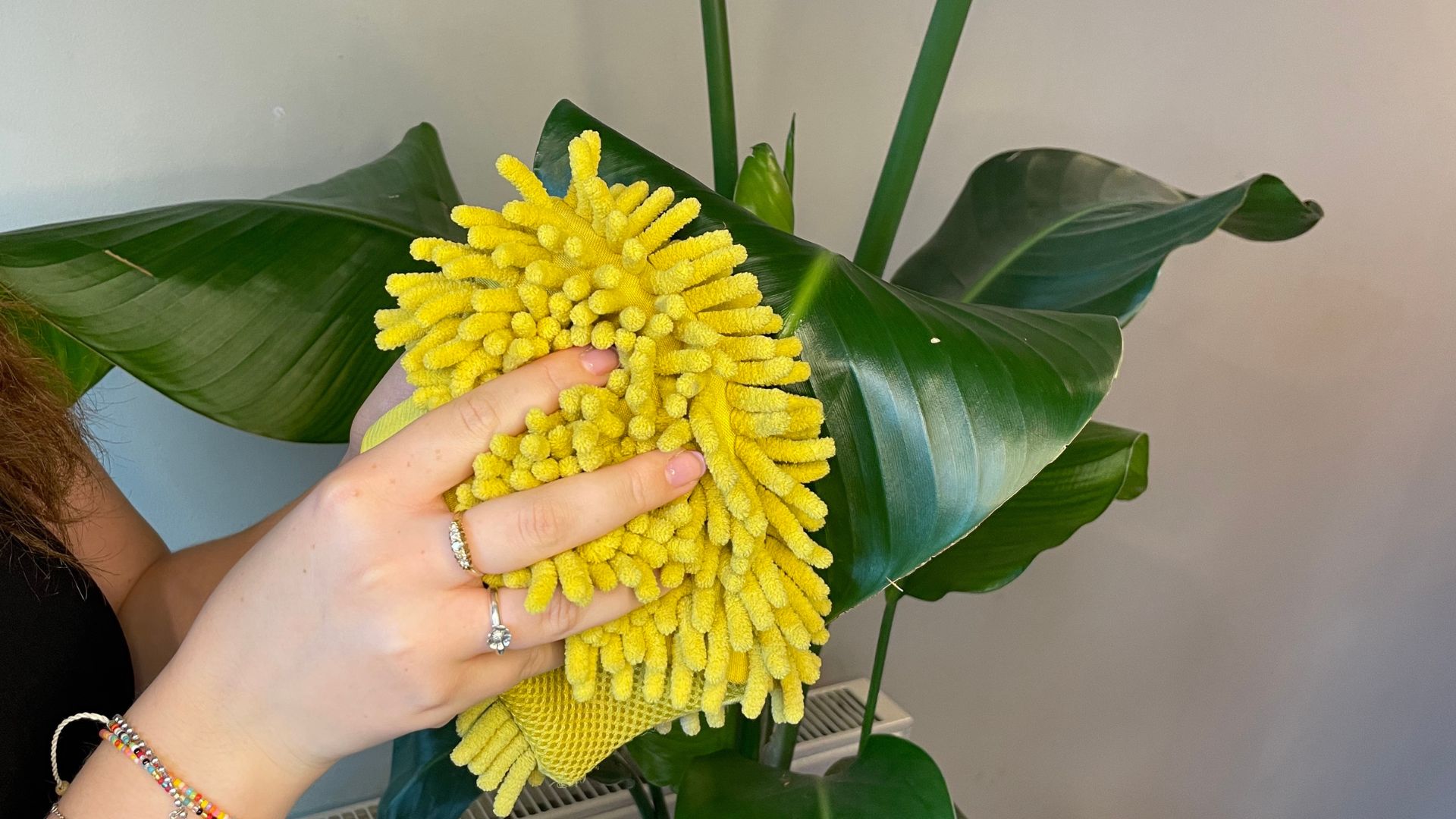
Depending on the plant, this step is a quick way of getting rid of the larger collections of dust and any cobwebs that have formed around your plant. Dusting before cleaning will allow for the microfibre cloth to tackle more stubborn dirt on the leaves instead of simply moving the dust around.
Should you have smaller delicate plants or those with furry leaves, Gardening expert Peter Ivanov from Fantastic Gardens suggests a different route.
"For plants with delicate or furry leaves, such as ferns or African violets, misting the leaves with water will remove dust and improve humidity," he says. "After misting, rinse the leaves with clean water using a gentle spray or place them under a lukewarm shower. Afterward, allow the excess water to drain away."
If your plant has large, waxy, and smooth leaves then you can continue with the following steps.
Step 3: Gently wipe the leaves with a damp cloth
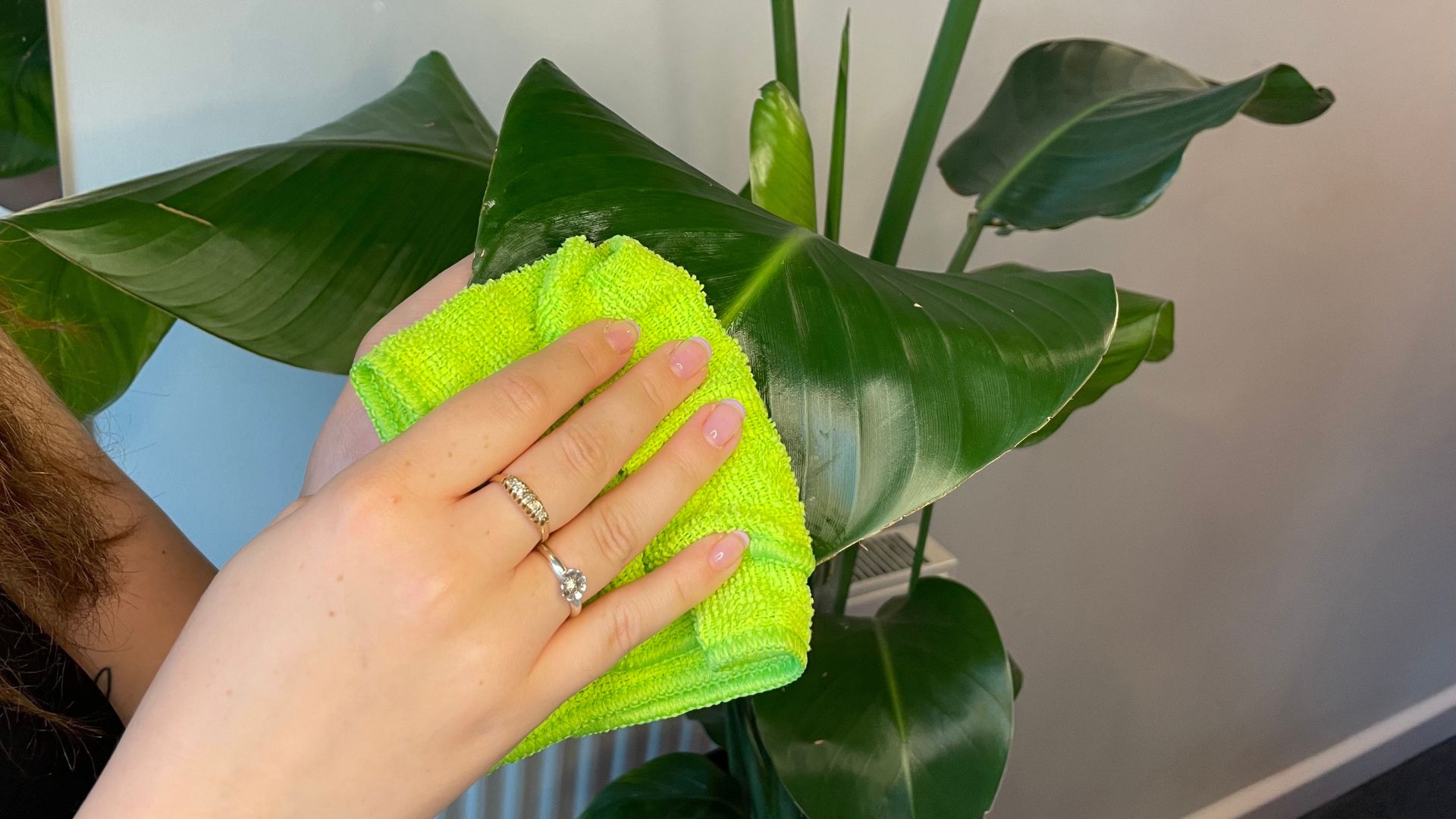
Once the majority of the dust has been removed, the plant will already be looking cleaner and healthier. This is when the deep clean can begin. If you don't have a microfibre cloth to hand a soft sponge will also do the trick.
Fill a bowl or sink with barely lukewarm water, be careful not to have it too hot or too cold. Mark explains that hot water can scald the leaves whereas water that's too cold can actually shock the plant.
Dip your cloth or sponge into the water and wring out any excess liquid. Then, gently wipe each leaf on both sides. It can help to hold the opposite side of the leaf you're cleaning with your hand for stability, just be careful not to crush any leaves or apply too much pressure.
Remember to make sure you're frequently rinsing the cloth or sponge as you go to avoid spreading any dirt around.
Step 4: Allow leaves to dry
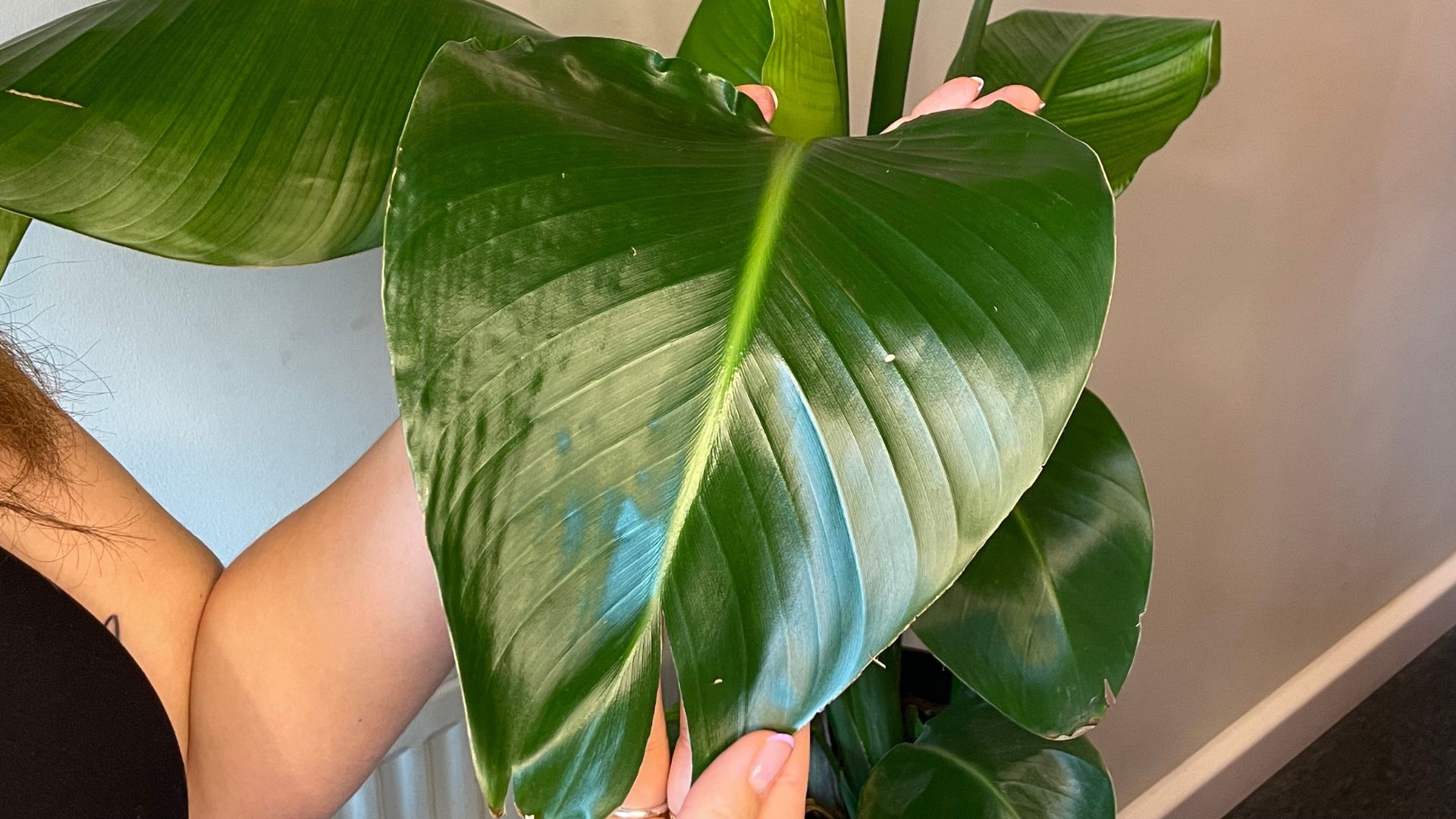
Once you've wiped down all the leaves and stems, it's time to let the plant dry off. This is the simplest step as it requires the least amount of effort.
Peter says, "After cleaning, allow the leaves to air dry in a well-ventilated area, away from direct sunlight. This will help prevent fungal growth or any damage to the plant."
How to make plant leaves shine
Now your plants are clean and can happily photosynthesize, there's the matter of shine. It's a debated topic in the plant world as having shiny plant leaves has little benefit when it comes to plant health - in fact, some products can clog the plant's pores and harm them.
Mark from Hortology, is not a fan of shining plants at all. He says, "The best way to get a shiny plant? Clean it. Let the leaf's naturally shiny surface take care of the rest." He explains that most plants have a natural waxy cuticle which is on the surface of their leaves, this itself gives off a natural shine.
However, if you are wanting to achieve that super shiny, healthy plant glow then the below methods will create minimal damage.

Method 1: Banana skin
This unique method is sustainable, natural, and a great way of reusing banana peels!
Mark Lane, Gardeners' World host and Gardening expert for Stannah recommends this unique approach. He says, "Take a banana skin and use the inside of the skin to wipe downwards on the leaf. Finish by wiping over the leaf with a dry cloth or paper towel." It's important to wipe any excess off - we don't want the leaf's pores to get blocked.
This method not only cleans the leaf but will also give it a shine and improve the overall health of the plant due to the potassium, manganese, and zinc found in bananas. Although this step can substitute cleaning altogether, we'd still recommend sticking with our original method as a starting point. It's far less messy, for starters...
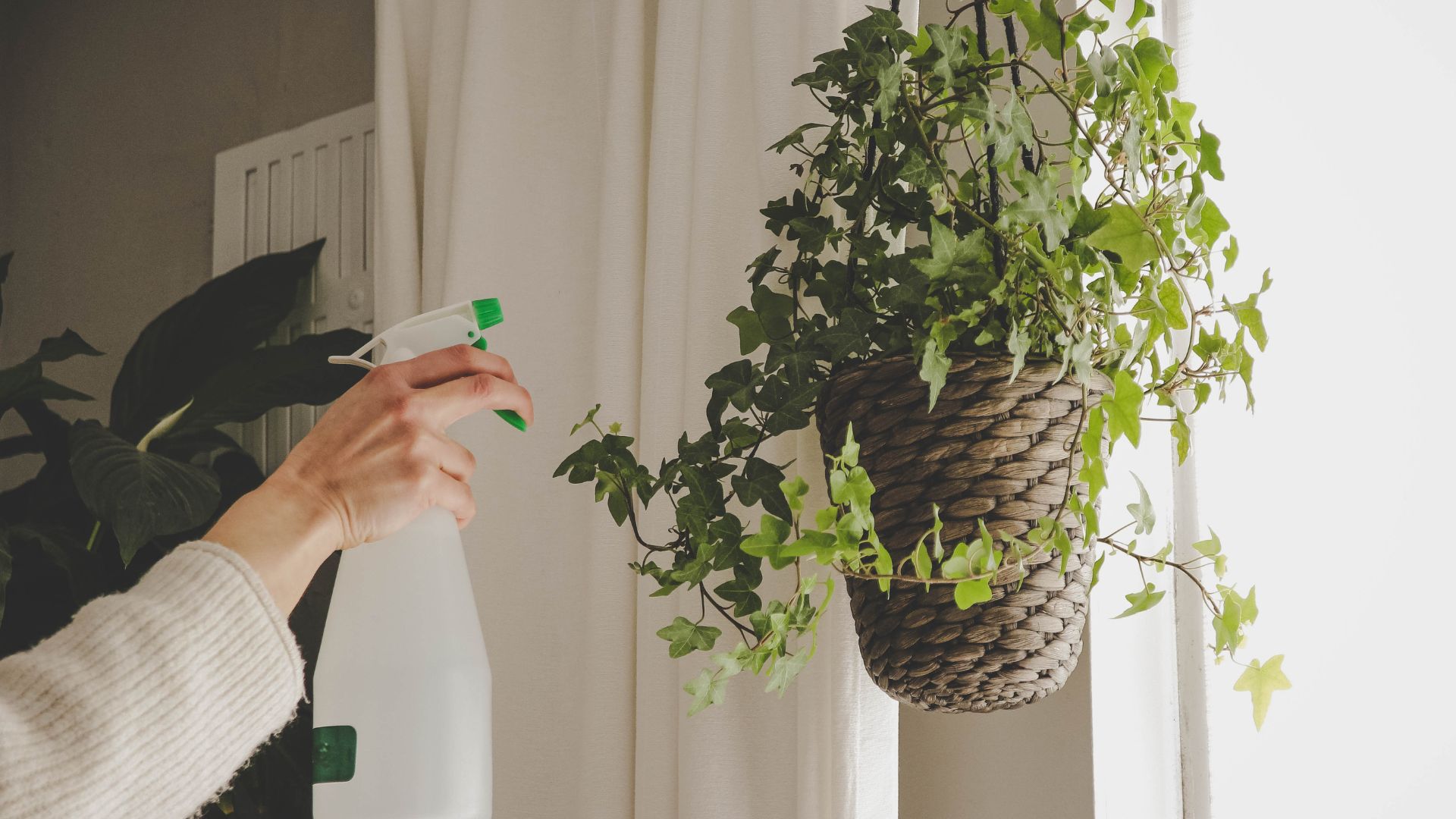
Method 2: Milk wash
Another seemingly strange technique also relies on the natural nutrients and fats within a food. This method again comes with some risks, but when done right, it will deliver beautifully shiny leaves.
To make the solution, mix one-part milk to three-part water. Peter suggests pouring the mix into a spray bottle and spraying the solution lightly on your plant's leaves before wiping them clean with a soft cloth.
He explains, "The milk's proteins will leave a gentle shine, making the leaves appear healthier and glossier. However, make sure to rinse the leaves with clean water afterward to prevent any residue from attracting pests."
Method 3: Branded leaf shining products
Should you not want to take the DIY route, there are lots of branded options on the market to choose from. Whether it's leaf shine spray, wipes, or oil there are various products on offer that promise to get your plants looking their best.
It's important to be mindful that you don't overuse shining products or use the wrong product on the wrong plant. Some plant species have more sensitive leaves and textures so it's always best to double-check what type of plant the shining product is designed for. Baby Bio's leaf shining spray is your best bet for this.
How often should you clean your plants?
The short answer is: it depends. There are a number of different things to take into consideration when deciding how often you should tackle cleaning your plants.
One of the biggest and perhaps most obvious indicators is dust accumulation. You will know best how quickly your spaces collect dust and how to get rid of dust in your home. With this in mind, it's recommended that you simply clean the leaves whenever you notice a visible layer of dust forming on them.
Your cleaning schedule will also differ depending on what types of plants you own. Gardening expert Peter says, "For plants with smooth leaves, a monthly cleaning is often sufficient. However, plants with hairy or textured leaves will require more frequent cleaning, for example, every 2 weeks, because dust tends to stick to their surfaces more easily."
If you're still not sure how often, there is a simple trick to check if your plants need a bit of TLC. Lightly rub one of the leaves between your fingers, if you feel dust then it's time for a clean. Mark from Hortology suggests using a small square of toilet roll for your more fragile plants. Gently wipe the leaf with the paper and see if any dust comes off, if it does you can start the cleaning process.
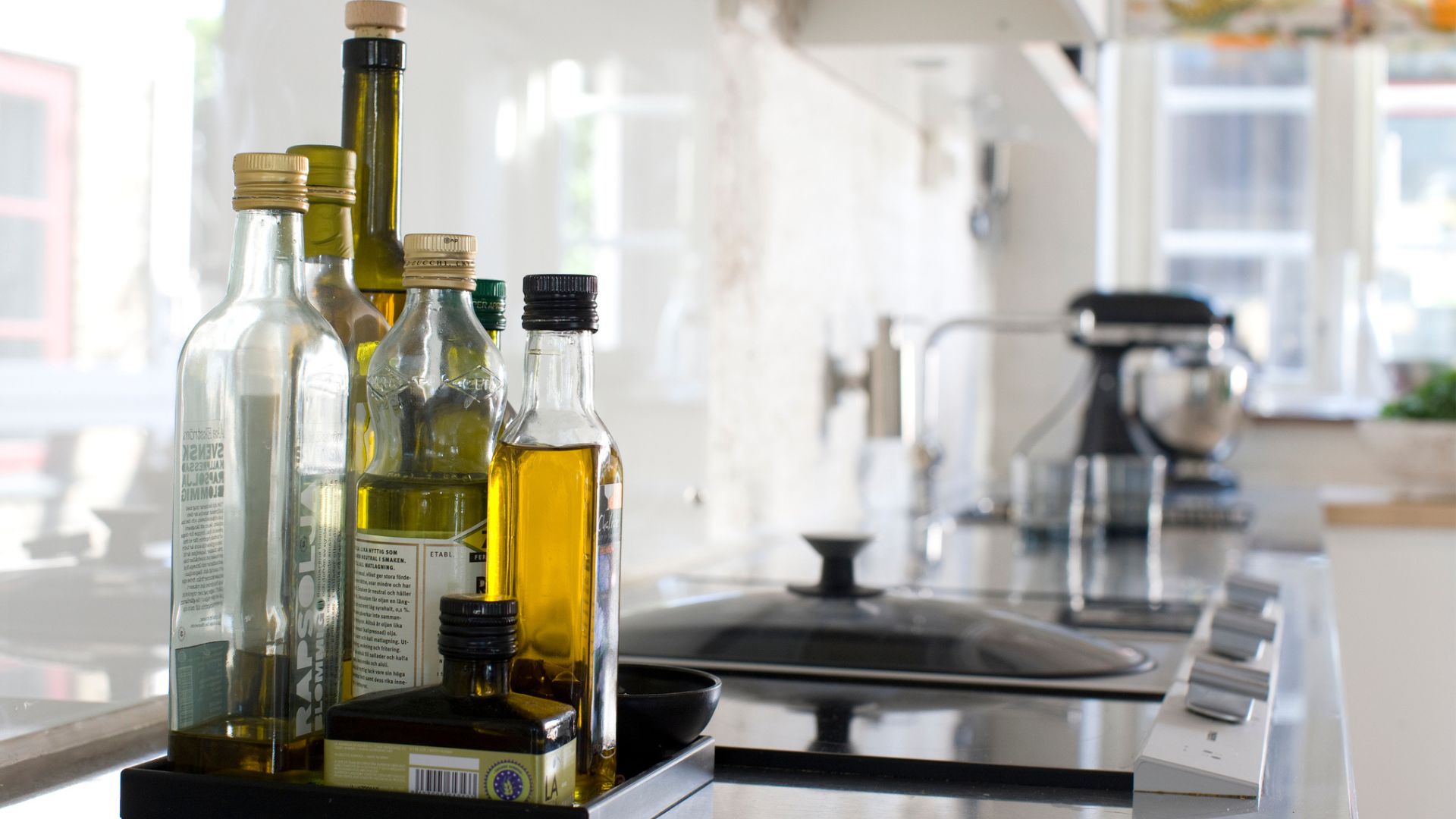
Is olive oil good for making plant leaves shine?
Contrary to both the milk solution and banana peel trick, olive oil can do a lot more harm than good. Although it is all-natural and does have moisturizing qualities, olive oil is extremely thick which does not mix well with sensitive plant pores.
It's not just clogged pores but a number of other issues can arise from coating your plant's leaves with olive oil. From attracting pests to staining nearby furniture, olive oil may give you a good result aesthetically but it may lead to a world of trouble down the line.
Peter does however suggest using it very sparingly as a conditioner on struggling plants. He says, "Olive oil can act as a conditioner, especially for plants with dry or damaged leaves. It can help nourish the leaves and make them more supple."
So as a shining technique, olive oil may not be the way to go. But if used correctly it can bring a little life back to your plants in other ways.
Are there species of plant I shouldn't clean?
As mentioned previously, there are different conditions needed for different plant species. From dusting to cleaning, some plants need a more gentle touch whereas others can withstand a tougher clean.
The main difference to take into consideration when deciding on a cleaning method is the leaf texture of your plant. Mark from Hortology says, "Some plants have leaves that are sticky or fuzzy on the surface. For these plants it can be traumatic to take a cloth to them, so you could do more damage than good."
Unlike the large waxy leaves of other plant species, these fuzzy plants are best cleaned by misting or blowing the dust off with air. Mark suggests using dust air cleaners that are usually used to clean computer keyboards as they can blast away the debris without much risk of causing damage to the plant.

Emily joined woman&home as a staff writer after finishing her MA in Magazine Journalism from City University in 2023. After writing various health and news content, she now specialises in lifestyle, covering unique cleaning hacks, gardening how-tos, and everything to help your houseplants thrive.